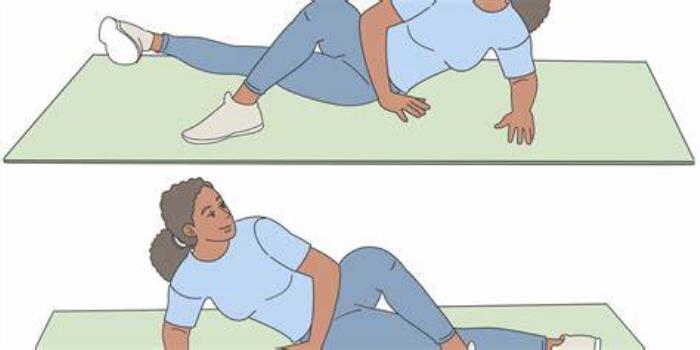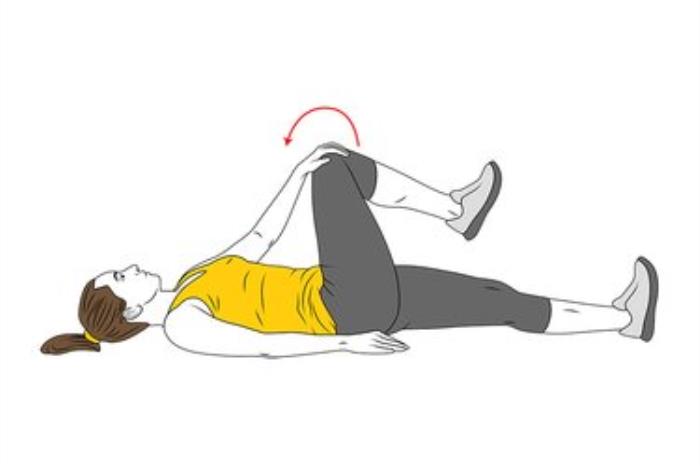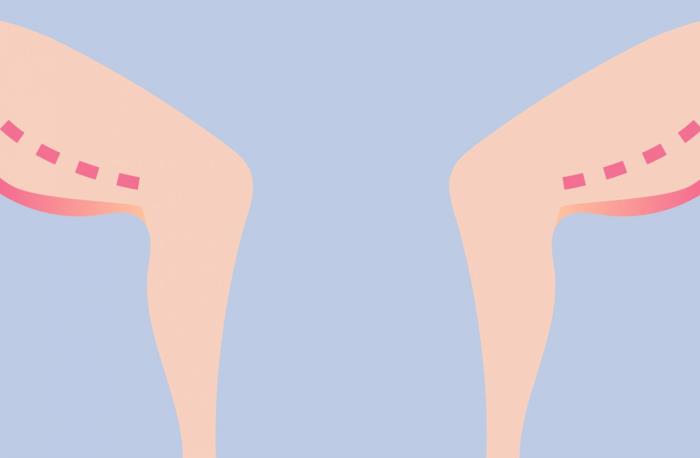Introduction to Thigh Lift Surgery
Thigh lift surgery, also known as thighplasty, is a cosmetic procedure designed to reshape and tighten the thighs by removing excess skin and fat. This surgery is particularly beneficial for individuals who have experienced significant weight loss, aging, or skin laxity due to factors like genetics or pregnancy. A thigh lift can enhance body contours, improve overall proportions, and boost self-confidence by providing a more toned and youthful appearance to the thighs. The procedure is often sought by patients who wish to achieve smoother thigh skin and a more defined silhouette.
Understanding the Thigh Lift Procedure
The thigh lift procedure typically involves making incisions along the inner or outer thighs, depending on the area of focus. Once the incisions are made, the surgeon removes excess skin and fat, followed by repositioning the remaining skin for a tighter fit. The technique may vary based on the patient's specific needs and the extent of skin laxity. The surgery is usually performed under general anesthesia or intravenous sedation, ensuring the patient remains comfortable throughout the procedure. After the surgery, patients can expect some swelling, bruising, and discomfort, but these effects are generally manageable with prescribed pain medication and rest.
Preoperative Mobility: What to Expect
Before undergoing thigh lift surgery, patients should prepare for the recovery process by discussing their mobility and physical activity with their surgeon. It is essential to maintain a baseline level of physical fitness, as this can aid in a smoother recovery. Patients are typically advised to engage in light exercises, such as walking, to promote circulation and minimize the risk of blood clots. Additionally, preoperative assessments may include evaluating the patient's mobility and functional capabilities, ensuring that they are in optimal health for surgery.

Immediate Post-Surgery Effects on Mobility
Following a thigh lift procedure, patients may experience temporary restrictions in mobility due to discomfort, swelling, and surgical dressings. It is common for individuals to have difficulty standing, walking, or climbing stairs during the initial recovery phase. Surgeons often recommend gradual movement to avoid stiffness, starting with short walks as soon as it is deemed safe. Supportive devices, such as crutches or a walker, may be recommended to aid mobility during the early recovery period, allowing patients to navigate their environment with greater ease.
Short-Term Recovery: Movement and Mobility Guidelines
In the short term, adhering to mobility guidelines provided by the surgeon is crucial for a successful recovery. Patients are generally encouraged to avoid strenuous activities, heavy lifting, or excessive bending for at least a few weeks post-surgery. Gradual increases in activity, starting with gentle stretching and walking, are typically advised to help regain strength and flexibility. It is essential for patients to listen to their bodies and follow their surgeon's instructions closely to facilitate healing and prevent complications, ultimately leading to the best possible outcomes from the thigh lift surgery.
Long-Term Impact of Thigh Lift Surgery on Physical Activity
Thigh lift surgery can have a profound long-term impact on physical activity levels. By removing excess skin and fat, patients often experience a boost in confidence, leading to increased participation in exercise and recreational activities. Many individuals report improved ease of movement and enhanced comfort while engaging in physical activities such as running, cycling, and aerobics. Over time, these positive changes can contribute to a healthier lifestyle, promoting better fitness levels and overall well-being.

Common Concerns About Mobility After Surgery
After thigh lift surgery, patients frequently express concerns regarding mobility and physical limitations during recovery. These concerns may include difficulty walking, climbing stairs, and performing daily activities. While some initial discomfort and swelling are expected, most patients find that their mobility improves significantly over time. Addressing these concerns with a qualified surgeon can help patients understand the recovery process and set realistic expectations for their mobility post-surgery.
The Role of Physical Therapy in Recovery
Physical therapy plays a crucial role in the recovery process following thigh lift surgery. A tailored rehabilitation program can help patients regain strength, flexibility, and range of motion in the surgical area. Physical therapists can provide guidance on safe exercises that promote healing while minimizing the risk of complications. By focusing on gradual progress and personalized care, physical therapy can enhance overall recovery and help individuals return to their regular physical activities more quickly and safely.
How Thigh Lift Surgery Can Enhance Mobility
Thigh lift surgery can significantly enhance mobility by addressing skin laxity and discomfort caused by excess tissue. Patients often report improved confidence in their movements, allowing them to engage in activities they may have previously avoided due to self-consciousness or physical limitations. The surgical procedure not only improves the aesthetic appearance of the thighs but also helps restore functionality, leading to a more active and fulfilling lifestyle.

Returning to Exercise: A Timeline for Recovery
Returning to exercise after thigh lift surgery typically follows a structured timeline, beginning with light activities as advised by the surgeon. Initially, patients are encouraged to focus on gentle movements and stretches to promote circulation and reduce swelling. As healing progresses, most individuals can gradually increase their activity level, with many resuming more vigorous exercises within 6 to 8 weeks post-surgery. However, it's essential for patients to follow their surgeon's recommendations to ensure a safe and effective return to their exercise routine.
Lifestyle Changes to Support Mobility Post-Surgery
Adopting certain lifestyle changes can significantly support mobility after thigh lift surgery. Patients are encouraged to maintain a balanced diet rich in nutrients that promote healing, such as proteins, vitamins, and minerals. Staying hydrated and incorporating light physical activities, like walking, can also aid recovery. Additionally, maintaining a healthy weight and engaging in regular, low-impact exercises can help preserve results and improve overall mobility in the long term.
Success Stories: Improved Mobility After Thigh Lift
Many patients share success stories highlighting the improvements in mobility following thigh lift surgery. These narratives often emphasize newfound freedom and comfort in physical activities, such as hiking, dancing, or participating in sports. The positive impact on their mobility not only enhances their physical capabilities but also contributes to greater self-confidence and an overall improved quality of life.
Potential Risks Affecting Mobility Post-Surgery
While thigh lift surgery can greatly enhance mobility, certain risks may affect recovery. Potential complications such as infection, blood clots, or adverse reactions to anesthesia can lead to setbacks in mobility. Additionally, issues like seromas or hematomas may require additional treatment and impact the recovery timeline. Being aware of these risks and following post-operative instructions can help mitigate complications and promote a smoother recovery process.
Psychological Impact of Enhanced Mobility
The psychological impact of enhanced mobility following thigh lift surgery can be substantial. Many patients experience a boost in self-esteem and body image, resulting in increased social interactions and participation in physical activities. The ability to move freely and confidently often leads to a more active lifestyle, which can further enhance mental well-being. Overall, the psychological benefits of improved mobility contribute to a more positive outlook on life and increased overall happiness.
The Importance of Follow-Up Appointments
Follow-up appointments are crucial for monitoring recovery after thigh lift surgery. These visits allow surgeons to assess healing, address any concerns, and provide guidance on resuming physical activities. Regular check-ins can help identify any complications early on and ensure that patients are on track to achieve their desired results. By prioritizing follow-up care, individuals can optimize their recovery and maintain the long-term benefits of their surgical procedure.
Preparing for Mobility Challenges After Surgery
Preparing for mobility challenges after thigh lift surgery is essential for a smooth recovery. Patients should anticipate some initial limitations due to swelling, discomfort, and surgical adjustments. Setting up a comfortable recovery area at home with easy access to essential items can facilitate mobility during the early stages. Utilizing assistive devices such as crutches or walkers may also be helpful. Moreover, having a support system in place, including family or friends, can provide encouragement and assistance as patients navigate their mobility challenges during the recovery process.
Balancing Rest and Activity in Recovery
Finding the right balance between rest and activity is crucial for effective recovery after thigh lift surgery. While rest is essential for healing, gentle movement is equally important to promote circulation and prevent stiffness. Patients are encouraged to engage in light activities, such as short walks, as soon as they are able, while avoiding strenuous exercises or heavy lifting for several weeks. Listening to the body and gradually increasing activity levels can help ensure a smoother recovery while maintaining the benefits of rest.
How to Monitor Progress in Mobility
Monitoring progress in mobility after thigh lift surgery involves tracking various factors, including pain levels, range of motion, and the ability to perform daily activities. Patients can keep a recovery journal to note their experiences, including any challenges or milestones achieved. Regular follow-up appointments with the surgeon can provide professional assessments of mobility improvements and guidance for the next steps in recovery. This proactive approach enables patients to stay informed and motivated throughout their healing journey.
Testimonials: Personal Experiences with Mobility Improvement
Many patients share inspiring testimonials about their experiences with mobility improvement after thigh lift surgery. These stories often highlight the transformative effects of the procedure, emphasizing increased comfort in movement and newfound confidence in physical activities. Patients describe how their enhanced mobility has allowed them to engage in hobbies they once avoided, such as dancing, traveling, or exercising regularly. Such testimonials serve as motivation for those considering the procedure, illustrating the potential benefits of improved mobility and overall quality of life.
Common Causes of Thigh Skin Laxity and Their Solutions
Explore the common causes behind thigh skin laxity, including aging, significant weight loss, and genetic factors. This knowledge can guide you in selecting effective solutions, ranging from surgical options to non-invasive treatments and lifestyle changes that help restore skin firmness.
Exploring Non-Surgical Treatments for Thigh Contouring
Understand the various non-surgical options available for thigh contouring, such as radiofrequency treatments and lipolysis injections. These innovative methods can effectively reduce fat and tighten skin without the need for invasive surgery, offering a convenient alternative for those looking to improve their thigh appearance.
Best Thigh Lift Surgery in India
The Best Thigh Lift Surgery in India offers patients effective body contouring solutions, using advanced surgical techniques to remove excess skin and improve the appearance of the thighs, customized to individual body goals.
Best Thigh Lift Hospitals in India
The Best Thigh Lift Hospitals in India are renowned for their cutting-edge facilities and experienced teams, ensuring that patients receive top-quality care before, during, and after surgery for optimal results.
Thigh Lift Surgery Cost in India
The Thigh Lift Surgery Cost in India is competitive, offering patients affordable options while ensuring the highest standards of care at leading hospitals, with a transparent pricing structure.
Best Thigh Lift Surgeons in India
The Best Thigh Lift Surgeons in India are highly skilled in performing the surgery, focusing on personalized care, precision, and long-term patient satisfaction for body contouring procedures.
FAQs About Thigh Lift Surgery and Mobility
Will I have limited mobility after thigh lift surgery?
Yes, some limitations are expected initially due to swelling and discomfort, but most patients experience significant improvements in mobility as they heal.
How soon can I start moving after surgery?
Light movements and short walks are generally encouraged within the first few days after surgery, but patients should follow their surgeon's specific recommendations.
What can I do to support my mobility during recovery?
Engaging in gentle activities, maintaining a healthy diet, and following a structured rehabilitation plan can help support mobility during recovery.
Are there risks that could affect my mobility after surgery?
Potential risks include complications such as infection or blood clots, which can impact recovery. Following post-operative instructions can help minimize these risks.
How long does it take to regain full mobility after a thigh lift?
Full mobility typically improves within a few weeks to months, depending on individual factors such as healing progress and adherence to recovery protocols.